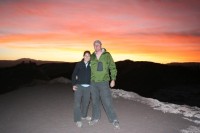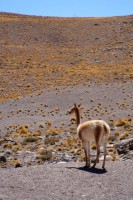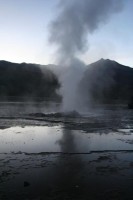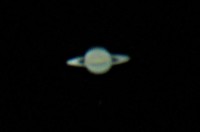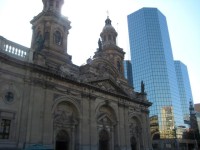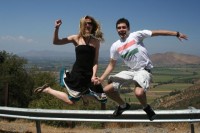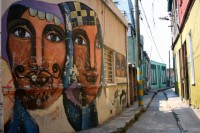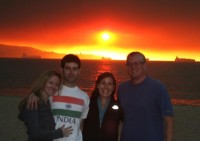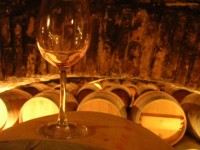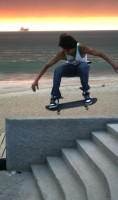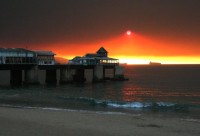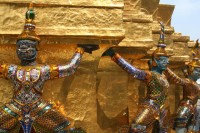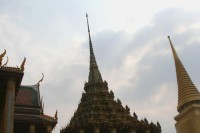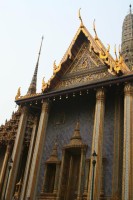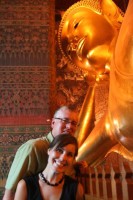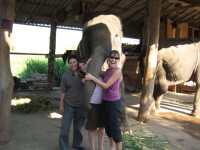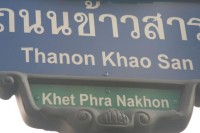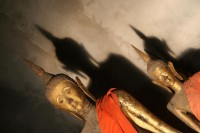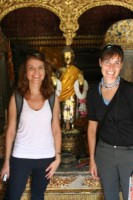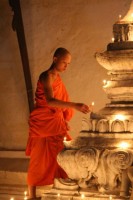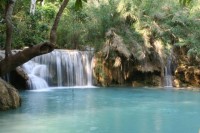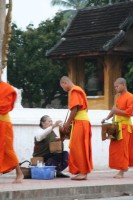Tue 25 Mar 2008
“Wine”ding Down in Mendoza
Posted by Derek under Argentina
No Comments
On the 8-hour bus ride from Santiago, Chile to Mendoza, Argentina, you climb steep roads twisting their way across the Andes Mountains before emptying you into the heart of the wine region of Argentina. Shortly after crossing the high-elevation border into Argentina, we spotted a snow-covered peak that our bus driver identified as Aconcagua – the tallest mountain you’ve probably never heard of. Measuring 22,841 feet, it takes the honor as the highest mountain in the world outside of Asia, bigger than Mt. McKinley (20,320 feet) and Kilimanjaro (19,340 feet) but well short of Mt. Everest (29,028 feet).
A couple of hours after descending from the Andes, we arrived in the provincial capitol of Mendoza. Within a few miles of the city, there are dozens of vineyards producing wines that regularly receive international acclaim. As this recognition continues to increase, so do the town’s visitors. While we missed Mendoza’s annual wine festival by a week, we met several travelers who had come to Mendoza just to sample the local grape juice. We did our part by visiting a few wineries, including a half-day tour through nearby vineyards and an olive oil producer via bicycle, rented (along with a map) from a well-named company called Bikes and Wines.
Walking through Mendoza at virtually any time of day or night, you will find the city’s residents wandering the streets, filling the tree-lined plazas scattered around the town and eating and drinking wine at the sidewalk cafes that are too numerous to count. I’d heard that Argentineans like to eat dinner late, but I never truly understood that until our first night in Mendoza.
With my parents – who met us for a few days in Mendoza before catching a cruise circling Chile and Argentina ((Many people have asked me how I got the travel bug. The easy answer is, “from my parents.” Growing up, we traveled the States every year seeking out new destinations in our pop-up camper, from which many of my greatest memories were produced. Once my sister and I started traveling internationally, my parents quickly followed…with a vengeance. In the past 15 years, my Mom and Dad – who both grew up on farms in rural Tennessee – have seen over 30 countries and keep adding destinations to their must-see lists. They are just one example of the many people I’ve met who started traveling internationally later in life; it goes to show you that it’s never too late to see the world!)) – we set off to sample grilled meat (an Argentina specialty) at 9:30 pm. As we entered the restaurant, we noticed we were the only diners, making us nervous that we were eating at an establishment recently receiving a bad review by the local health department. Our fears were soon allayed when we looked around at 10:00 pm and every table was full. This phenomenon continued for our remaining days in Mendoza, as diners seemingly hid in their homes until they were allowed to exit around 10 or 10:30 pm. As we walked back to our hotel after 11 pm each night, virtually every restaurant we passed was completely packed.
During our few days in Mendoza, we assimilated to the Mendozan way of life quite easily, sleeping to 10 am, drinking coffee until 11 am, eating lunch around 2 pm and starting to think about which sidewalk cafe we should dine at somewhere around 10 pm. On our last day with my parents, we sat down for lunch at a cafe around 1:30 in the afternoon and didn’t leave until almost 6 pm, having an extended lunch and playing heated card games while fueling our systems with coffee and light conversation – the kind of day where you do virtually nothing memorable but know that you’ll never forget.
While the city of Mendoza isn’t remarkably beautiful (you have to drive a few miles out of the city to the surrounding vineyards for that), its pace of life is. Coming from work- and money-obsessed America where taking vacations and slowing things down is considered a character flaw in many circles, you can’t help but think that the Mendozans have figured some things out that we Americans are unfortunately decades (if not centuries) from discovering.
[embedplusvideo height=”350″ width=”450″ editlink=”http://bit.ly/1mFJxK7″ standard=”http://www.youtube.com/v/RNS9umb_ak4?fs=1″ vars=”ytid=RNS9umb_ak4&width=450&height=350&start=&stop=&rs=w&hd=0&autoplay=0&react=1&chapters=¬es=” id=”ep9486″ /]

